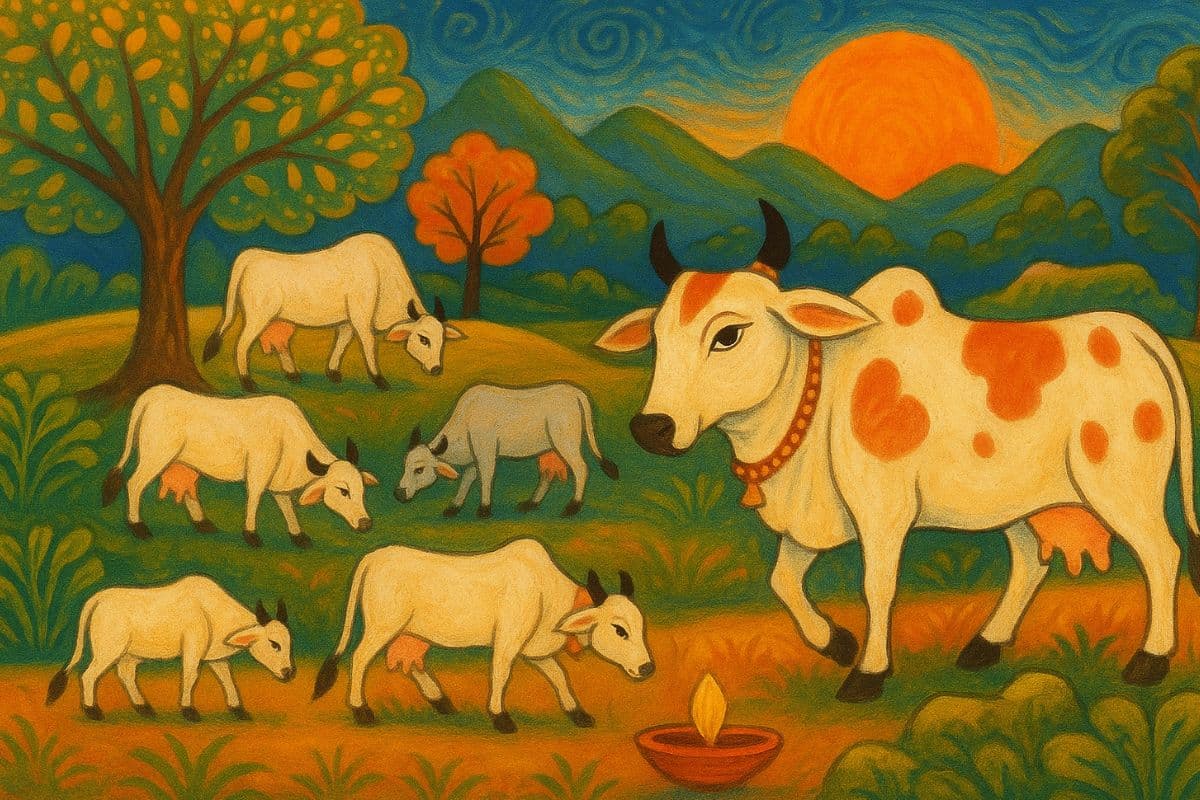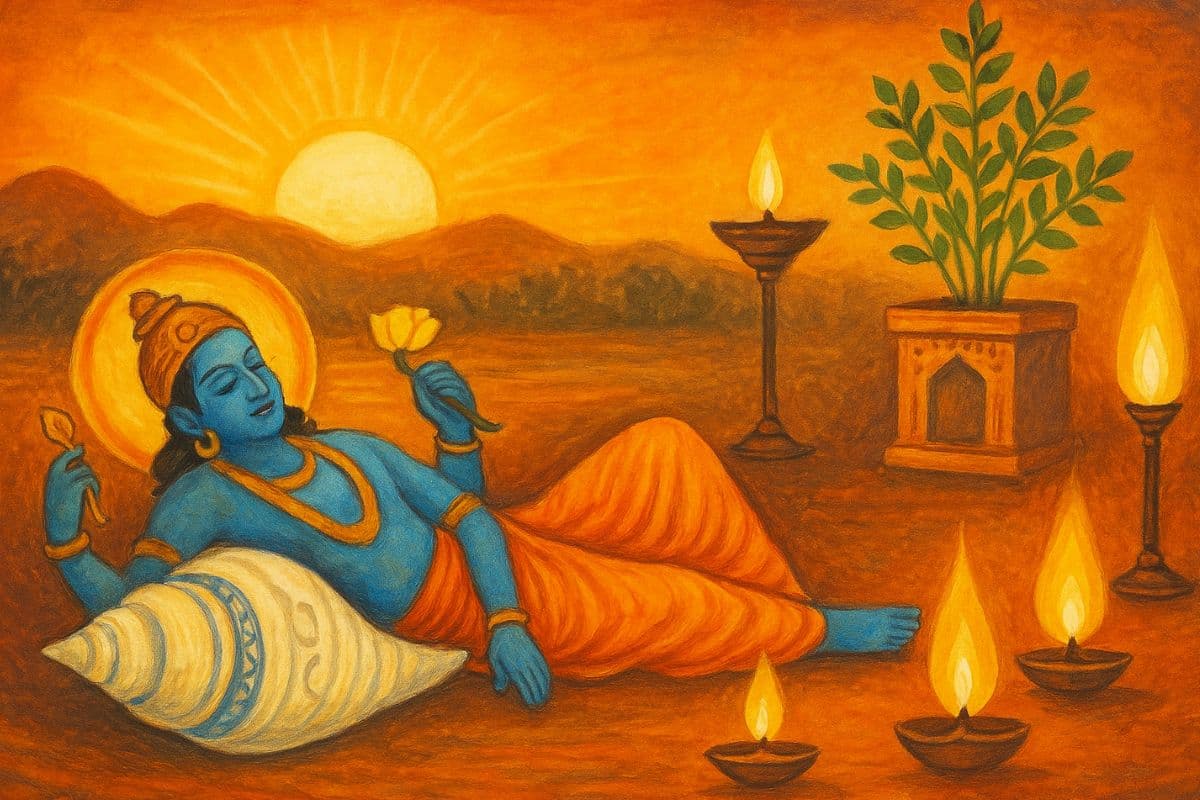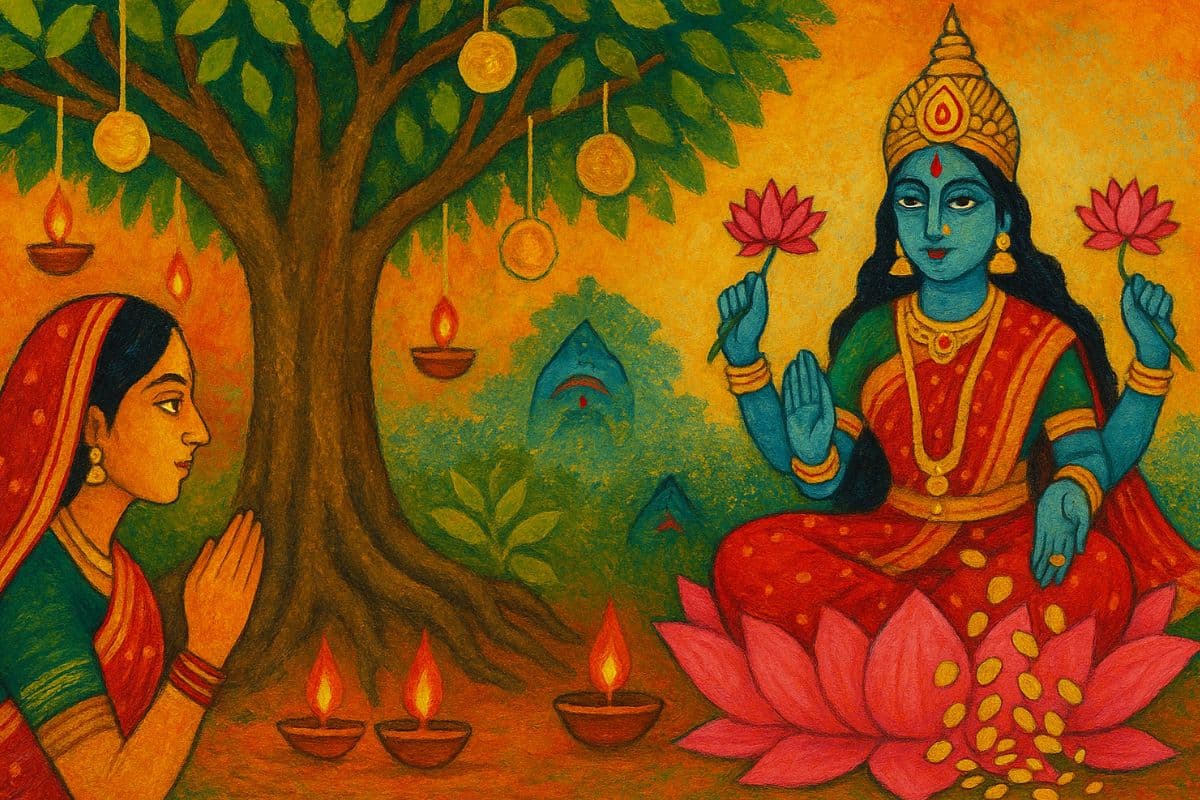Gopashtami 2025: Date and sacred rituals to boost your devotion

Date, rituals, and meaning of Gopashtami 2025 for true devotion
Gopashtami is one of the most heartwarming and devotional days in the Hindu calendar. Falling just after Govardhan Puja, this festival celebrates Lord Krishna’s divine act of protecting the people of Braj and their cattle from the fury of Lord Indra. It is a day that honours cows, compassion, and the deeper meaning of true devotion.
This year, Gopashtami will be celebrated on Thursday, October 30, 2025, during the Ashtami Tithi of Kartik Shukla Paksha. The timing for puja and rituals holds great significance for devotees across India, especially in Mathura, Vrindavan, and other Braj regions where the festival is celebrated with immense enthusiasm.
Gopashtami 2025: Date, Tithi, and Muhurat
Gopashtami: Thursday, October 30, 2025
Ashtami Tithi Begins: 9:23 am on October 29, 2025
Ashtami Tithi Ends: 10:06 am on October 30, 2025
The auspicious timings for performing puja and cow worship are during the Shubha, Labha, and Amrita Choghadiya periods throughout the day:
Morning Shubha Muhurat: 6:32 am to 7:55 am
Midday Labha Muhurat: 12:05 pm to 1:28 pm
Afternoon Amrita Muhurat: 1:28 pm to 2:51 pm
Evening Amrita Muhurat: 5:37 pm to 7:14 pm
Night Labha Muhurat: 12:05 am to 1:42 am (October 31)
These timings are considered ideal for worship, offering prayers, and performing sacred rituals to seek divine blessings and peace.
The Story of Gopashtami: A Lesson in Faith and Devotion
Gopashtami marks a turning point in the story of Lord Krishna’s life. It was on this day that young Krishna was given the responsibility of herding cows for the first time. Accompanied by his brother Balarama and friends, Krishna stepped into his divine role as the protector of cows and nature.
The festival also commemorates the end of Lord Indra’s wrath. When the people of Braj stopped offering sacrifices to Indra on Krishna’s advice, the rain god became furious and sent torrential rains to flood the region. To protect the people and their cattle, Krishna lifted the Govardhan Hill on his little finger, sheltering everyone beneath it for seven days. When Indra realised Krishna’s divine power and compassion, he bowed in humility. The storm cleared, and peace returned to Braj. This victory of devotion and humility over arrogance is what makes Gopashtami such a sacred celebration.
The Spiritual Essence of Gopashtami
Gopashtami teaches us that true devotion is not about fear or ritual alone. It is about love, protection, and service. Lord Krishna showed that caring for the humble and the helpless is the highest form of worship. Cows are regarded as sacred symbols of purity, nourishment, and abundance. In Hindu culture, they are seen as manifestations of Kamadhenu, the divine wish-fulfilling mother. Worshipping cows on Gopashtami is believed to bring prosperity, peace, and happiness to the household. This day also reminds us of the deep connection between humans and nature. Honouring the cow is a reminder to respect the cycle of life and the gifts of the earth that sustain us.
How Gopashtami is Celebrated
In temples and homes, Gopashtami is celebrated with devotion, song, and joy. The day begins early, with devotees bathing and preparing for the rituals.
Cow Worship: Cows and calves are bathed, decorated with flowers, and adorned with painted horns. Their foreheads are marked with vermillion and turmeric. Devotees then offer food, incense, and lamps while chanting Krishna’s names.
Temple Celebrations: In Mathura and Vrindavan, Lord Krishna and Balarama are dressed as cowherds, known as Gopala and Govinda. Temples come alive with bhajans, kirtans, and special aartis dedicated to Krishna.
Acts of Service: Devotees feed cows, distribute prasad, and perform charity in the name of Gau Seva (service to cows). Some visit gaushalas, while others prepare homemade offerings and share them with the needy.
In Maharashtra, the festival is observed as Govatsa Dwadashi, where similar rituals of cow worship and offerings are performed with devotion and gratitude.
Simple Rituals You Can Do at Home
Even if you cannot visit a temple or gaushala, you can easily celebrate Gopashtami at home:
-
Clean Your Puja Area: Start your day with a bath and purify your home. Choose a calm corner for your puja and decorate it with flowers.
-
Light a Lamp and Offer Prayers: Offer a diya, incense, and sweets to Lord Krishna. Chant Om Namah Shivay or the Gayatri Mantra to purify your surroundings. Listen and chant along on AstroSure.ai for peace and spiritual clarity.
-
Honour the Cow: If possible, offer green fodder or fruits to a nearby cow. Feeding animals is one of the purest forms of Seva.
-
Share Food: Distribute prasad or home-cooked food to people in need. Krishna’s teachings emphasise compassion and sharing.
-
Reflect and Meditate: Spend a few moments thinking about the story of Govardhan. Reflect on how faith and humility can protect you from life’s storms.
The Deeper Message of Gopashtami
At its heart, Gopashtami is about Bhakti: pure devotion that comes from love rather than fear. Lord Krishna taught that true faith does not demand grandeur but sincerity. Protecting and serving life in any form is the simplest way to worship the divine. Every time you offer water, food, or even kind words, you are participating in the essence of Gopashtami. When you care for nature, you are walking the path Krishna showed the people of Braj thousands of years ago. This festival is a beautiful reminder that strength and compassion go hand in hand. Krishna’s act of lifting Govardhan Hill was a gesture of love: a message that still holds true today.
Gopashtami 2025 invites you to reconnect with faith in a simple, heartfelt way. Whether you are in Mathura, Mumbai, or anywhere else in the world, you can celebrate the day by offering gratitude, kindness, and devotion. Light a lamp, chant Krishna’s name, feed a cow, or simply reflect on the story of Govardhan. Each act, however small, adds to the divine energy that this sacred day represents.



